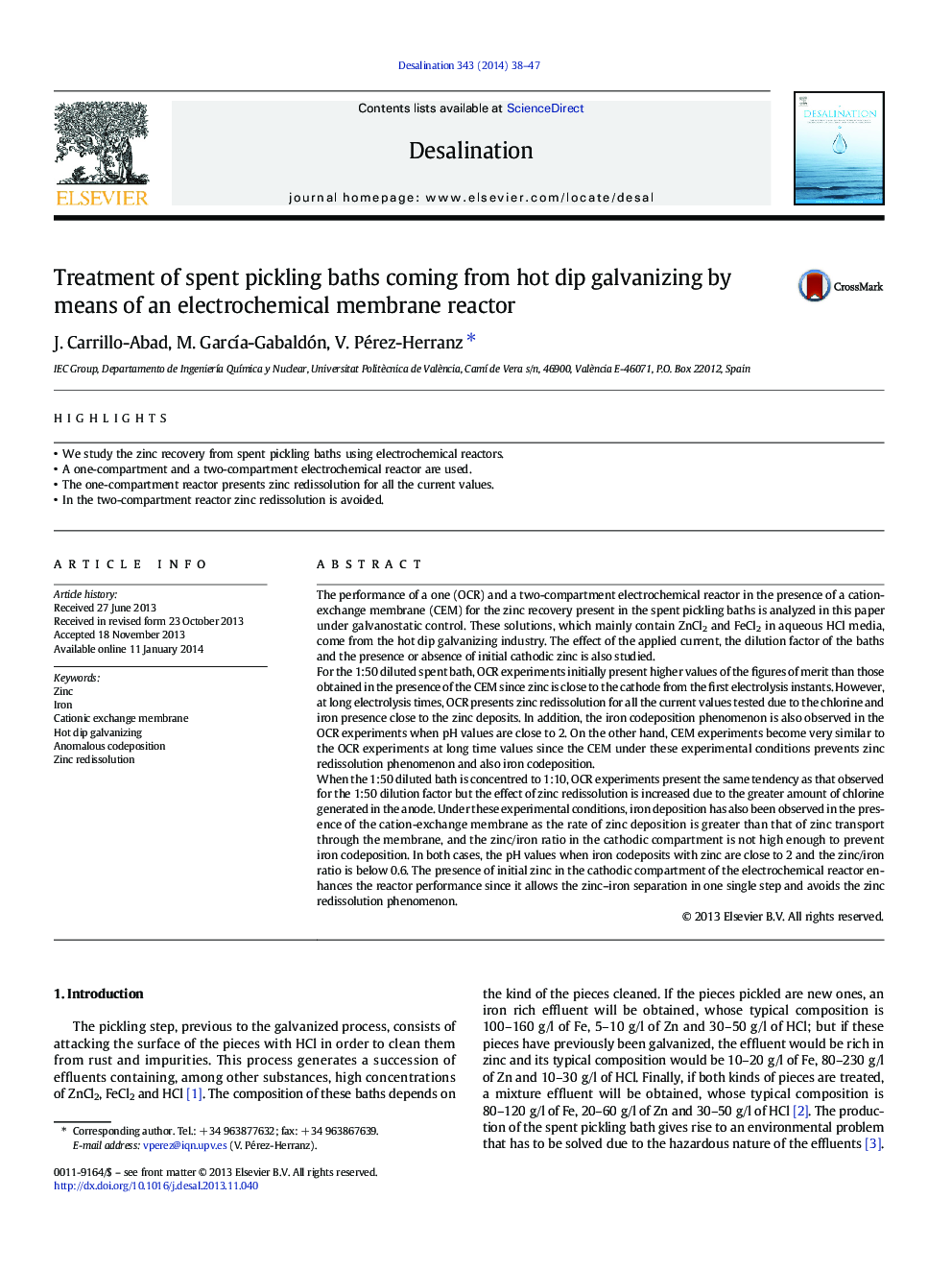| کد مقاله | کد نشریه | سال انتشار | مقاله انگلیسی | نسخه تمام متن |
|---|---|---|---|---|
| 623542 | 1455352 | 2014 | 10 صفحه PDF | دانلود رایگان |
• We study the zinc recovery from spent pickling baths using electrochemical reactors.
• A one-compartment and a two-compartment electrochemical reactor are used.
• The one-compartment reactor presents zinc redissolution for all the current values.
• In the two-compartment reactor zinc redissolution is avoided.
The performance of a one (OCR) and a two-compartment electrochemical reactor in the presence of a cation-exchange membrane (CEM) for the zinc recovery present in the spent pickling baths is analyzed in this paper under galvanostatic control. These solutions, which mainly contain ZnCl2 and FeCl2 in aqueous HCl media, come from the hot dip galvanizing industry. The effect of the applied current, the dilution factor of the baths and the presence or absence of initial cathodic zinc is also studied.For the 1:50 diluted spent bath, OCR experiments initially present higher values of the figures of merit than those obtained in the presence of the CEM since zinc is close to the cathode from the first electrolysis instants. However, at long electrolysis times, OCR presents zinc redissolution for all the current values tested due to the chlorine and iron presence close to the zinc deposits. In addition, the iron codeposition phenomenon is also observed in the OCR experiments when pH values are close to 2. On the other hand, CEM experiments become very similar to the OCR experiments at long time values since the CEM under these experimental conditions prevents zinc redissolution phenomenon and also iron codeposition.When the 1:50 diluted bath is concentred to 1:10, OCR experiments present the same tendency as that observed for the 1:50 dilution factor but the effect of zinc redissolution is increased due to the greater amount of chlorine generated in the anode. Under these experimental conditions, iron deposition has also been observed in the presence of the cation-exchange membrane as the rate of zinc deposition is greater than that of zinc transport through the membrane, and the zinc/iron ratio in the cathodic compartment is not high enough to prevent iron codeposition. In both cases, the pH values when iron codeposits with zinc are close to 2 and the zinc/iron ratio is below 0.6. The presence of initial zinc in the cathodic compartment of the electrochemical reactor enhances the reactor performance since it allows the zinc–iron separation in one single step and avoids the zinc redissolution phenomenon.
Journal: Desalination - Volume 343, 16 June 2014, Pages 38–47
